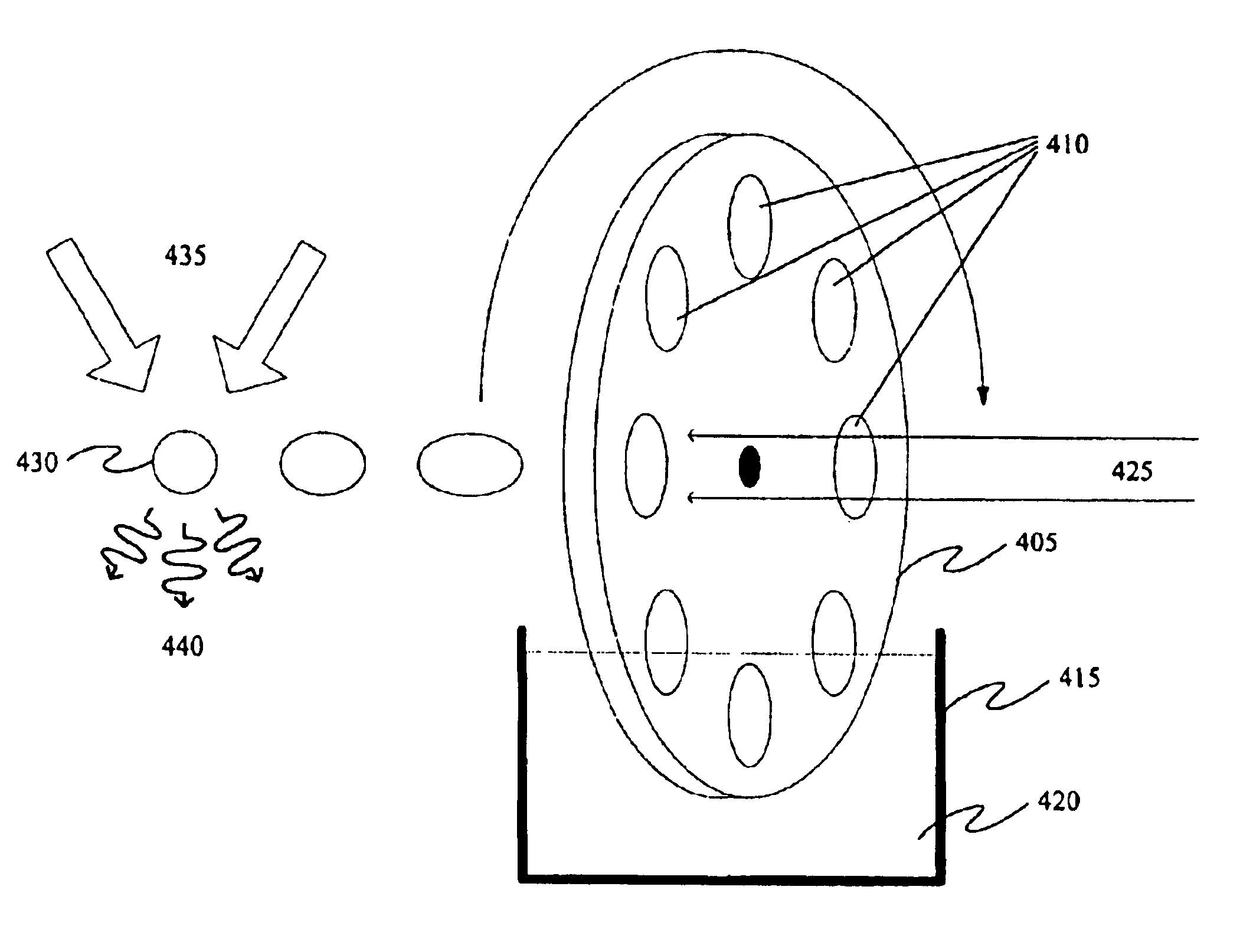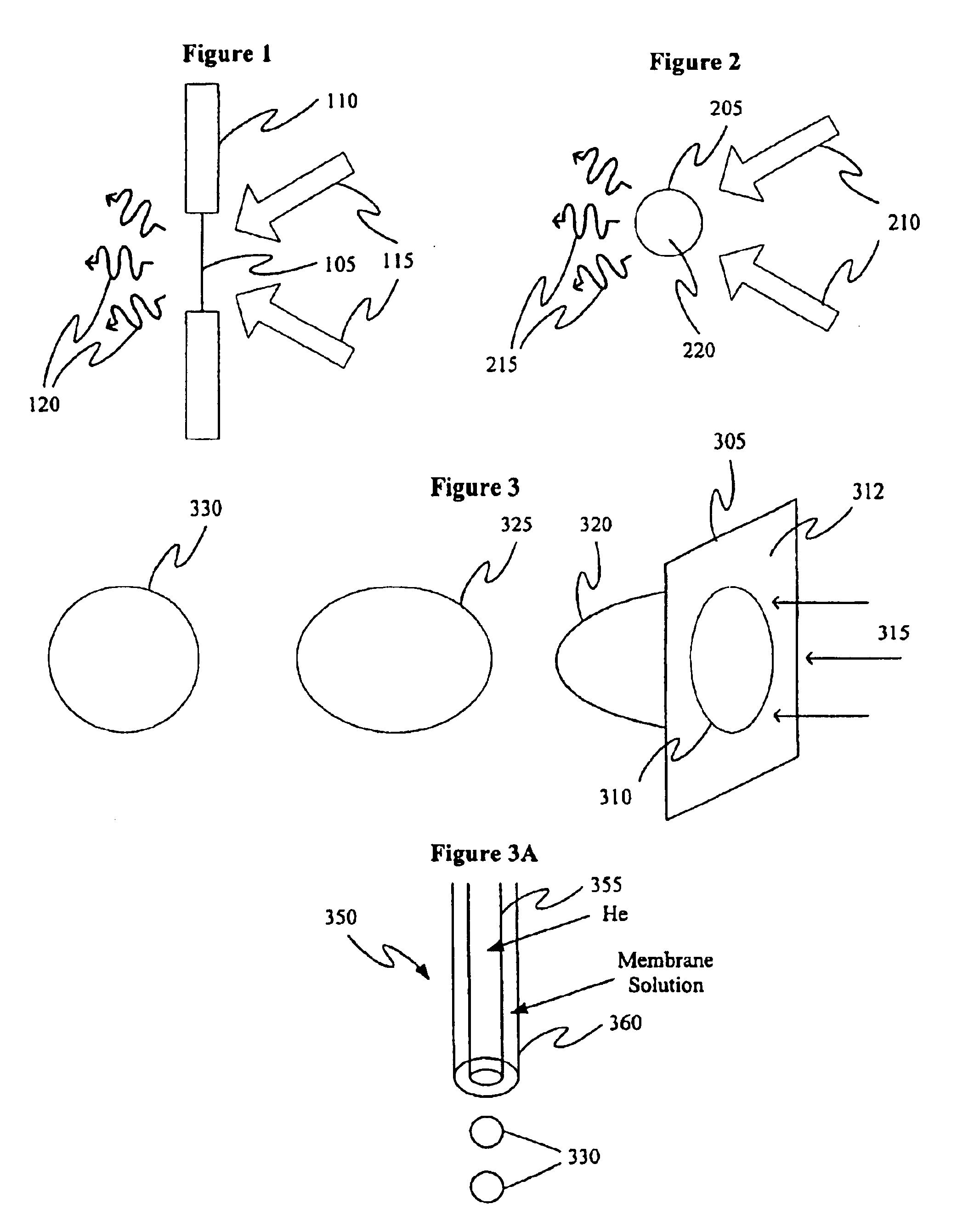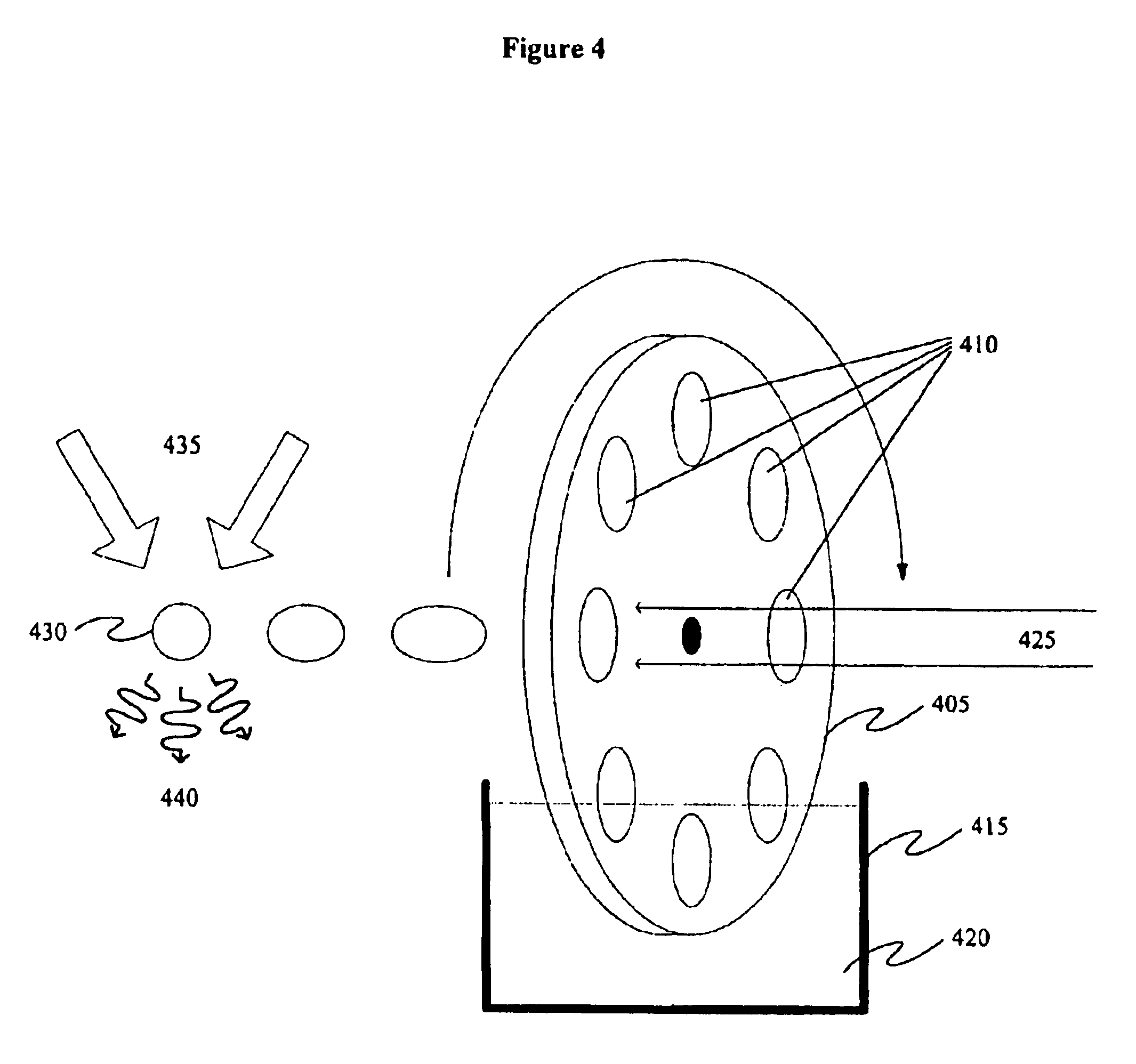Method and apparatus for generating a membrane target for laser produced plasma
a laser and plasma technology, applied in the direction of x-ray tubes, beam/ray deflecting arrangements, optical radiation measurement, etc., can solve the problems of limited range of desired wavelengths achievable by either gas or liquid systems, strong shocks into solid materials, and impose limitations on chemical elements or materials. , to achieve the effect of easy illumination, less debris and splashing, and convenient illumination
- Summary
- Abstract
- Description
- Claims
- Application Information
AI Technical Summary
Benefits of technology
Problems solved by technology
Method used
Image
Examples
Embodiment Construction
[0022]A method and apparatus for generating membrane targets for laser-produced plasma are described and depicted below. As stated previously, it is desirable to utilize a target in the shape of a thin disc. Accordingly, a thin membrane comprising the desired substance may be utilized as an approximation of the thin disc, thereby providing a desirable target material. Alternatively, a spherical membrane may be used to approximate a thin disc. Spherical membranes possess the advantage that they may be illuminated with coherent light from more than one direction. These embodiments, as well as the devices used to produce them, are described in further detail below.
[0023]A cross-sectional view of one embodiment of a membrane apparatus for laser-produced plasma is depicted in FIG. 1. In FIG. 1, a target membrane 105 is formed in an aperture in a membrane apparatus 110 and is held in place by virtue of the surface tension of the membrane material 105. The membrane is illuminated with cohe...
PUM
 Login to View More
Login to View More Abstract
Description
Claims
Application Information
 Login to View More
Login to View More - R&D
- Intellectual Property
- Life Sciences
- Materials
- Tech Scout
- Unparalleled Data Quality
- Higher Quality Content
- 60% Fewer Hallucinations
Browse by: Latest US Patents, China's latest patents, Technical Efficacy Thesaurus, Application Domain, Technology Topic, Popular Technical Reports.
© 2025 PatSnap. All rights reserved.Legal|Privacy policy|Modern Slavery Act Transparency Statement|Sitemap|About US| Contact US: help@patsnap.com



